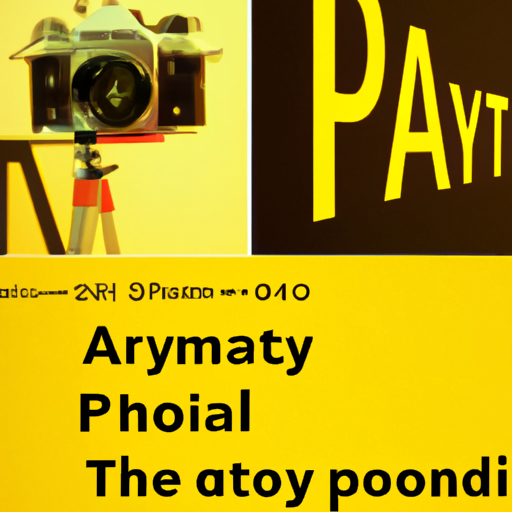
-
Table of Contents
The Role of Typography in Personal Branding

Typography plays a crucial role in personal branding. It is not just about choosing a font for your logo or website; it is about creating a visual identity that reflects your personality, values, and goals. In this article, we will explore the importance of typography in personal branding and how it can help you stand out from the crowd.
1. Typography Sets the Tone
The choice of typography sets the tone for your personal brand. Different fonts evoke different emotions and convey different messages. For example, a bold and modern font may convey a sense of confidence and innovation, while a classic serif font may evoke a sense of tradition and reliability.
Consider the personal brand of a graphic designer. They may choose a playful and creative font to reflect their artistic nature and to appeal to clients who are looking for unique and imaginative designs. On the other hand, a lawyer may opt for a more formal and traditional font to convey professionalism and trustworthiness.
It is important to choose a font that aligns with your personal brand values and resonates with your target audience. By selecting the right typography, you can set the tone and create a strong first impression.
2. Typography Enhances Readability
Readability is a key factor in personal branding. If your audience cannot easily read your content, they are less likely to engage with it. Typography plays a significant role in enhancing readability.
When choosing a font for your personal brand, consider factors such as legibility, spacing, and line height. A font that is too small or too tightly spaced can strain the reader’s eyes and make it difficult to consume your content. On the other hand, a font that is too large or has excessive line height can make your content appear disjointed and unprofessional.
Case Study: Medium
Medium, a popular online publishing platform, places a strong emphasis on typography to enhance readability. They use a clean and simple font with generous line spacing, making it easy for readers to consume their articles. This attention to typography has contributed to their success as a platform for high-quality content.
3. Typography Builds Consistency
Consistency is key in personal branding. It helps to establish trust and recognition among your audience. Typography plays a vital role in building consistency across various touchpoints of your personal brand.
When creating your personal brand, choose a font or a set of fonts that you will consistently use across all your branding materials, including your website, social media profiles, business cards, and presentations. This consistency creates a cohesive and professional look, making it easier for your audience to recognize and remember your brand.
Case Study: Coca-Cola
Coca-Cola is a prime example of a brand that has built consistency through typography. The company has been using its iconic Spencerian script font since the late 19th century. This font has become synonymous with the brand and is instantly recognizable worldwide. By consistently using this font, Coca-Cola has built a strong and enduring brand identity.
4. Typography Differentiates Your Brand
In a crowded marketplace, it is essential to differentiate your personal brand from others. Typography can be a powerful tool in achieving this differentiation.
By choosing a unique and distinctive font, you can create a visual identity that sets you apart from your competitors. Consider the personal brand of a fashion designer. They may choose a handwritten script font to reflect their creativity and individuality. This choice of typography helps them stand out in a sea of generic fonts used by other designers.
It is important to strike a balance between uniqueness and legibility. While it is essential to differentiate your brand, you should also ensure that your chosen font is readable and accessible to your audience.
5. Typography Evokes Emotions
Typography has the power to evoke emotions and create a connection with your audience. Different fonts have different personalities and can elicit specific emotional responses.
Consider the personal brand of a life coach. They may choose a font that is warm and inviting to create a sense of trust and comfort. This choice of typography helps to establish an emotional connection with their audience, making them more likely to engage with their services.
It is important to understand the emotions and associations that different fonts evoke. By choosing typography that aligns with the emotions you want to convey, you can create a more impactful personal brand.
Conclusion
Typography plays a significant role in personal branding. It sets the tone, enhances readability, builds consistency, differentiates your brand, and evokes emotions. By carefully selecting typography that aligns with your personal brand values and resonates with your target audience, you can create a strong and memorable visual identity.
Remember, typography is not just about choosing a font; it is about creating a cohesive and impactful brand experience. So, take the time to research and experiment with different fonts to find the perfect typography for your personal brand.
